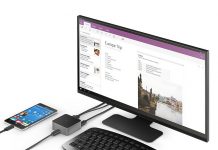Reading on mobile phones is a subject of my continued fascination. How to help people read e-books on their phones? What to do to overcome popular prejudices?
Certainly, mobile phones won’t be a primary e-reader for anyone who wants to read more than occasionally, but they can be very useful as a supporting, emergency device. In a couple of days I’ll publish an article with tips on how to effectively use phones for that purpose.
Now, I’d like to share with you a couple of conclusions from an excellent study released by Read It Later in January. The study’s source was 100 million articles saved by Read It Later users across all major web and mobile platforms. The most interesting part is what time during a day users of particular devices are reading articles formerly saved.
The chart below shows articles read on an iPhone.
The data proves what we may have expected: people use their phones “in between”. This can be applied to social media streams, e-mails, text messages, RSS feeds and books.
Mobile phone is a first device we grab after waking up. As you see, a lot of Read It Later articles were “consumed” around 6 A.M. Next two opportunities to read on a phone are at the time spent on commuting to work (8-10 A.M.) and back home (5-7 P.M.). For many people it’s long enough to read not only a couple of articles in Read It Later app, but also a chapter of a Kindle book.
Evening should be the time when people switch to bigger devices: computers, tablets or e-readers – to take a full advantage of bigger screens. However, the data shows that number of articles read between 8 and 10 P.M. is not substantially lower. Let’s compare it to the usage of iPad, which is predictable – we read on it mostly in the evenings:
The obvious part is that we generally read in the evenings, after work, when there is no need to hurry, when we can seat on a sofa and devote 100% of our attention to reading.
What is not so obvious, and I’d like to highlight it as much as I can, is that with mobile phone as an e-reader there is no need to postpone reading until evening. Any time we reach for it (and we are reaching many times a day) this can be done with the intention to read.
Let’s keep in mind that in general we consume the world in a much different way than a couple of years ago. We jump in, stay short, scroll, act, leave. Periods of time spent on a single activity are shorter and shorter. It would be really bad if people stopped reading books just because of the fact they didn’t find an easy (=not time consuming) way to do it.
Via Piotr Kowalczyk’s Password Incorrect


































Piotr, I think the major prejudice against phone-reading is literally the size of the screen. As a perceptual thing, a phone screen is so much smaller than the page size of the smallest paperback that most people, when introduced to the idea, immediately react with “Oh, that’s way too small to read on.”
The issue is similar to that of the keyboard: Formerly a large, heavy thing (the Royal Typewriter, for example), keyboards started to shrink during the computer age… and the entire time, old typists would say “that new keyboard’s too small for me to use.” I typed on a Royal typewriter, and now I regularly use the chicket-style keyboard on my smartphone, or the on-screen keyboard… then I’ll turn around and see someone thumb-typing on a Blackberry, and I say, “Now, that’s way too small to type on!”
The key, as always, is: You get used to what you want to get used to. People adapted to smaller screens, just like they did with smaller keyboards, because the advantages of using it made it worth their while to adapt. Most of those who haven’t adapted could do so, but they lack the incentive to do so. (Note, I said “most;” there will always be some with physical limitations to keep them away from smaller devices.)
Smartphones might be good for “in-between” reading, but there is so much else that they are good for that they continue to be used when not “in-between,” as the graph shows. People who try it usually discover that there is plenty of real estate on a phone screen to read comfortably (provided the book is formatted properly), and a lot of the readability complaints are overblown.
Steven is absolutely right (!)
Motivation and convenience are the key issues that drive our habits. I for one enjoy reading on my iPhone a lot. At first I thought it would be too small. I played around a lot with font size and then landscape or portrait. But as I did so I became very comfortable reading on it. Now I read regularly on my iPhone and since I loaned my Kindle to my brother a month ago, I have finished three eBooks on it.
I use the white on black mode and dim the brightness to counter the glare of the white text when I am reading in the dark in bed, where I read a lot (using Stanza). The iPhone is very convenient in bed because it is so small and light I can hold it in one hand and I can scroll to the next page with the flick on one finger of the same hand.
Is it optimum ? no I guess not. But it is convenient and perfectly acceptable for getting ‘into’ the world of the eBook I am reading.
Hi Steven, mobile phones are a naturally born device of young people. You’re right about how we have to adapt to a shrinking space (typing, reading), but youngsters – they don’t have problem with a size, they learn fast. If they can watch a video on a mobile phone, they can also read a short story.
The more I think about it, the more I tend to describe it not by “prejudice”, but by “excuse”.
“Reading a book? No way, the screen is too small,” and done, end of story.
Someone should show that reading books on cellphones is a damn cool thing – and then nobody will have a problem with screen size:-)
Get a few teen heartthrobs and a couple Playboy bunnies to read on a cellphone, and in a decade, everyone will be doing it!
I’m less brave than that:-) Actually I explore the topic of “being a book geek is a cool thing”. We’ll see…